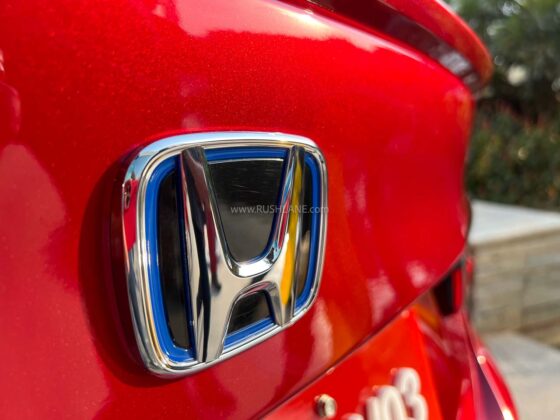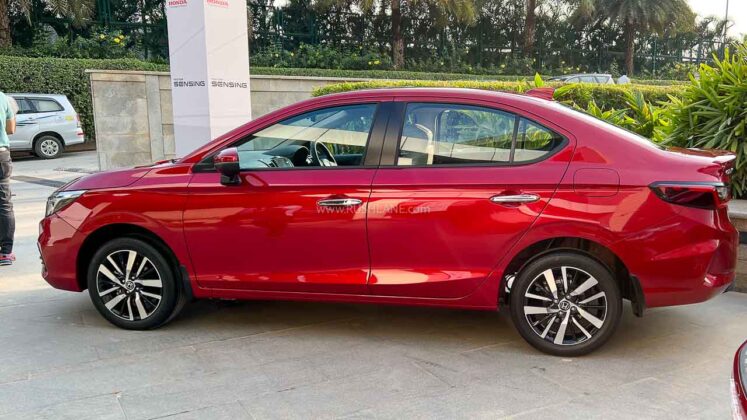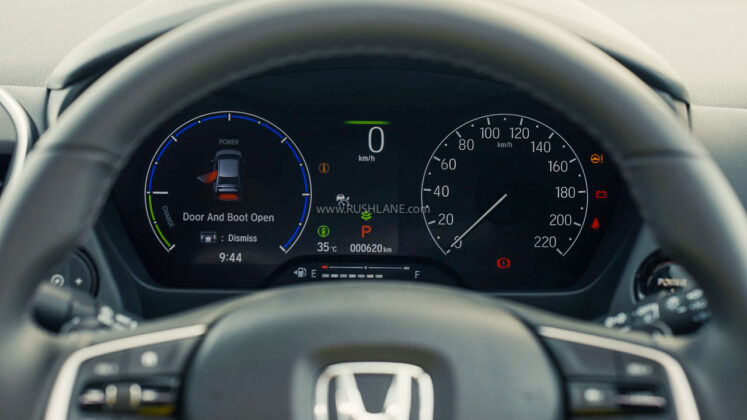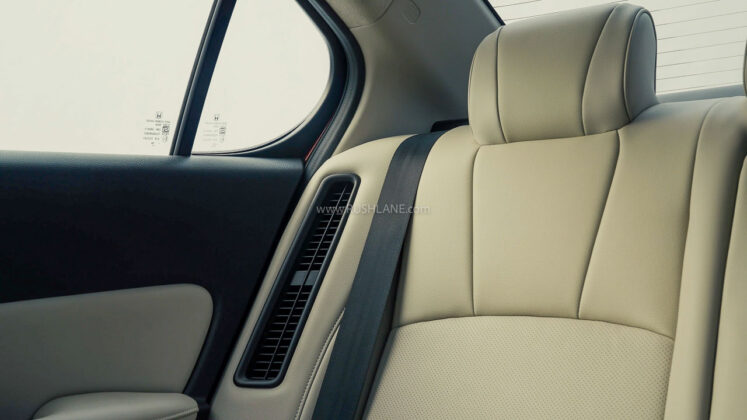Honda City Hybrid has been launched in India at a price of Rs 19.5 lakh, ex-sh

Honda Cars India has been quiet for too long with not much variety or competition to offer in a market where there is no shortage of automotive activity. And that too at a time when new players are taking a sizable bite of sales from the well established brands.
Getting back in the business, Honda Cars India has made a strategic launch of City Hybrid which deserves everyone else’s attention and take notes. In the current time of alarmingly high fuel cost on which there is no hope of return, Honda has introduced such a powertrain which may be a sustainable solution to fuel economy. That too without compromising on performance, or worrying about range factor which is a nightmare for pure EV owners with touring impulse. Let’s see how the City eHEV has cracked the issue.
Honda City Hybrid – How Does Tech Work
Honda City eHEV has employed the best of both worlds – namely parallel and series hybrid technologies. Honda has eliminated a transmission system that is usually connected to the engine in a parallel hybrid system. They have made the car function mostly like a series hybrid, by having the engine do the work of a genset to continually charge the modestly sized battery pack.
Doing that duty is an Atkinson cycle engine which is the work this type of engine is particularly suitable for. But, at the time when additional thrust is required (past 80 kmph), a coupling clutch engages to connect the 1.5-litre engine directly to the wheels, providing that push quite seamlessly; making the 2022 Honda City a Strong Hybrid Electric Vehicle (SHEV). Short video below by Honda, explains the working of the City Hybrid technology.
In simple terms, the City runs and feels like an electric car from stand-still, drawing power from the small 0.734 KWh, 172.8 Volt Lithium-ion Battery. In a short while, when the battery loses much charge, the engine turns on automatically and begins to help generate electricity to charge the battery. The car continues to run only by the two electric motors which are capable of delivering 98 PS between 5,600 rpm and 6,400 rpm. They produce a torque of 253 Nm from halt to 3,000 rpm, which contributes to the instantly-satisfying initial pickup of the car.
The present drive mode is illustrated on the meter console with cool animation showing the flow of power to the wheels. When you hit the highway and demand speeds above 80 kmph, the meter shows the third drive mode where the engine is connected directly to the wheels through a clutch without any form of transmission system in between to manipulate the speed. The engine speed is regulated as per the vehicle speed demand. Above 120 kmph, the car gets driven by the combination of both the engine and the two motors for an enjoyable drive. The top speed is said to be 176 kmph, with the acceleration from 0-100 kmph claimed at 10 seconds flat.
Therefore, the City eHEV offers a high mileage of 26.5 kmpl (ARAI Certified). When we took the car for a test drive outside Bengaluru on the highway towards Nandi Hills, the fuel efficiency indicator effortlessly rose to 20 kmpl in a short span. Now imagine the perks of such a high mileage when you don’t compromise on performance. On top, you get a variety of safety features which the standard City owners miss out on big time!

Honda City Hybrid – The Tech
Under the umbrella Honda Sensing, the City eHEV features Collision Mitigating Braking System (CMBS), Road Departure Mitigation System (RDM), Lane Keep Assist System (LKAS), Adaptive Cruise Control and Auto-High Beam. The CMBS looks out for possible collision risk at front like a car or cattle, and warns the driver by alarm and a visual on the instrument cluster.
The RDM warns the user of heading away from the road marking towards the curb, and intervenes by taking mild control of the steering wheel to mitigate the lane departure. The LKAS does the same but with lane markings; it makes sure the car stays in the center of its lane and intervenes by taking soft control of the steering wheel when the driver lets the car loose to take its own path towards the next lane which happens on a curvy road.
The Adaptive Cruise Control system drafts the car ahead, mimicking its cruising speed, braking and acceleration (upto the set cruising speed limit). It is to be noted that the City eHEV’s ADAS features run not based on RADAR, but based on a Camera that’s embedded at the top-center of the windshield. These same features are referred to as autonomous tech by some manufacturers. But Honda has refrained from terming it autonomous. They claim that the term autonomous is incorrect for the tech above, as it is not a fully autonomous driving system. Honda calls it Sensing.
Apart from those, the 5th generation City owners don’t have much to envy, they’d hardly even identify the City Hybrid unless they notice the blue accent on the Honda Logo and get up-close to look for cosmetic differences. A car nut could figure out the new foglamp trim with streaks that overlay the bumper, the Carbon Finish Rear Bumper Diffuser, and the Boot-lip Spoiler. Upon staring at the alloy wheels with curiosity, one might notice the rear disc brake that’s exclusive to the Hybrid City. While these are standard on the eHEV, there is a list of official accessories to distinguish one’s own car further.

Honda City Hybrid – Interiors
The interior is again vastly the same, except for the obvious disappearance of the tachometer in favour of a power meter similar to a tacho that’s switchable with a variety of other info-animations. On the steering, there are buttons for Adaptive Cruise Control and Lane Keep Assist. The paddle shifters do the function of increasing or decreasing the intensity of regenerative braking, which can be easily felt like engine braking upon releasing the accelerator pedal. The hand brake lever has been removed and an electronic parking brake switch has been provided on the centre tunnel.
The colour theme is distinctive to the Hybrid, with ivory leather on black plastic, instead of beige-black combo on the standard City. What you wouldn’t expect to see is an air vent on the right end of the passenger seat on the shoulder level that may seem like an AC vent for the rear passenger but what it is, is an air-inlet that sucks cool air from the cabin to keep the battery pack at optimum temperature.

Lastly, the biggest surprise is the drop in boot space, from 506 litres to 306 litres due to the position of the battery pack. But Honda managed to make the best use of the space available, by making the boot floor flat for easy push and pull of luggage, and also find space near the spare tire for one or two small bags.
Verdict
The Honda City Hybrid would definitely be desirable for a buyer looking for a sedan in the segment, but at 19.49 lakhs (ex-showroom), it is upto the buyer to decide if he or she is going to shell out that extra 4-odd lakhs for fuel efficiency, for status of owning a hybrid or for the ADAS features. Apart from that, there is not much to ponder as there is only a lot to gain and nothing to compromise on by choosing the Strong Hybrid City especially since there aren’t that many sedans these days, and none with as much features in this price segment.











